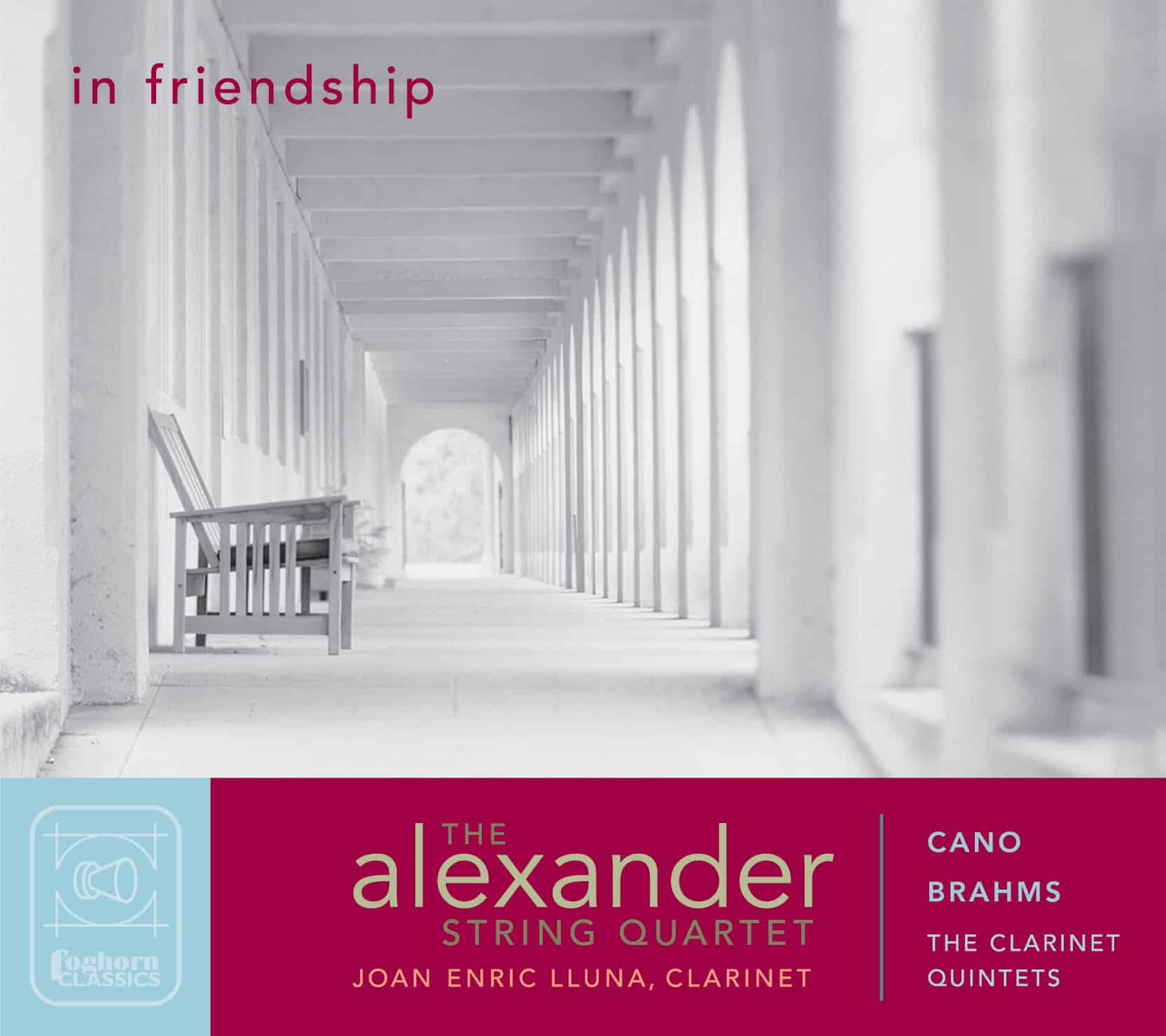One of the most fertile conjunctions in the history of music has been the combination of the smooth sonority of the clarinet and the resonant sound of stringed instruments — that fusion of quite different textures and sounds has produced great music in completely different eras. And that combination of sonorities has at particular moments been energized by the close friendship between a superb clarinet player and a particular composer — from Mozart and clarinetist Anton Stadler, and Carl Maria von Weber and clarinetist Heinrich Baermann, to Brahms and clarinetist Richard Mühlfeld, and Carl Nielsen and clarinetist Aage Oxenvad. In Friendship offers two works for clarinet and string quartet that grew out of close relationships between performers and composers. Clarinetist Joan Enric Lluna recalls his long friendship with composer César Cano:
César and I met in the harmony class at the Valencia Conservatory. Our teacher was very demanding, and halfway through the academic year, from the original ten students only César and I survived in the class. I learned a lot that year, struggling every week to have my harmony exercises done on time while César came every week with more exercises than we were asked to do. He was brilliant and our teacher nicknamed him “César Franck.”
I returned to Valencia some years later from Belgium to join a horn player and pianist for a concert. We were short of repertoire and immediately thought of asking
César to write a piece for us, as he had a reputation for being a very good and fast composer. He provided a brilliant trio in just a week — the first of several pieces he wrote for me. Later came Sueño oscuro (“Dark Dream”) for solo clarinet, which I premiered in the Ensems (a contemporary music festival in Valencia). César spent two years in London, where I was already living, and there he wrote Vigilias for clarinet and piano, which I premiered at Wigmore Hall, and later — back in Valencia — Apolo en Sodoma, also premiered at Wigmore Hall. He also wrote a clarinet concerto for me that was premiered with the Valencia Orchestra. The Clarinet Quintet is the most recent piece César has written as the result of our friendship.
Listen to excerpts from César Cano’s Quintet for Clarinet and Strings, Op. 74:
César Cano on his Quintet for Clarinet and Strings, Op. 74:
The Clarinet Quintet, Opus 74 is a work for clarinet and string quartet, structured in four movements. Veladas Proporciones (veiled proportions) is the enigmatic title of the first movement. Here we find a great variety of proportional note values and rhythms, intentionally written for the listener to perceive them almost unconsciously, as they are organic and coherent with the musical discourse, and not artfully calculated. Finding that balance between organic simplicity and necessary complexity, which is never arbitrary, ostentatious or pretentious, is one of my aesthetic goals. In this first movement there is a combination of sharply rhythmic passages, creating poly-rhythms and poly-pulses with intensely lyrical phrases from the clarinet and the first violin.
The second movement, Ecos y Lances (echoes and duels), is a lively scherzo in triple meter. The motoric underpinning of the entire piece relies on a particular rhythmic cell which dislodges the basic rhythm, played by two strings in ricochet, imitating one another in an echo, while the other instruments create a polyrhythm. On this complex but thin and light rhythmic tapestry, the clarinet and first violin join to expose the main theme, which returns later. The clarinet has two more short duels, first with the cello and then the viola.
Cantos Oblicuos (oblique chants) is the title of the third movement. It begins with a counterpoint of glissandi in the strings, something heard in the previous two movements, though with less prominence. The magical clarinet multi-phonics stand out in this subtle microtonal passage. The strings deploy rapid polyrhthmic arpeggios while the clarinet and cello play slow and expressive contrapuntal melodies which create a beautiful contrast. The final section displays a dense polyphonic mural featuring all five voices, characterized by the constant presence of accented ornamental turns of varied dimensions.
The fourth and last movement, Pulso Florido (florid pulse), is strong, energetic and eminently rhythmic with passages of instrumental virtuosity between the clarinet and first violin. Contrasting rhythmic cells are alternated to give variety while maintaining the rhythmic drive that holds the whole movement together. These cells are generated by various internal reorganizations of 7/8, 8/8, and 9/8 meters. The carefully planned development of dynamics and the melodic and harmonic material create tensions that strain the structure of this piece, which retains a clear musical momentum.
Purchase In Friendship:
Allegro Classics
iTunes
Amazon

